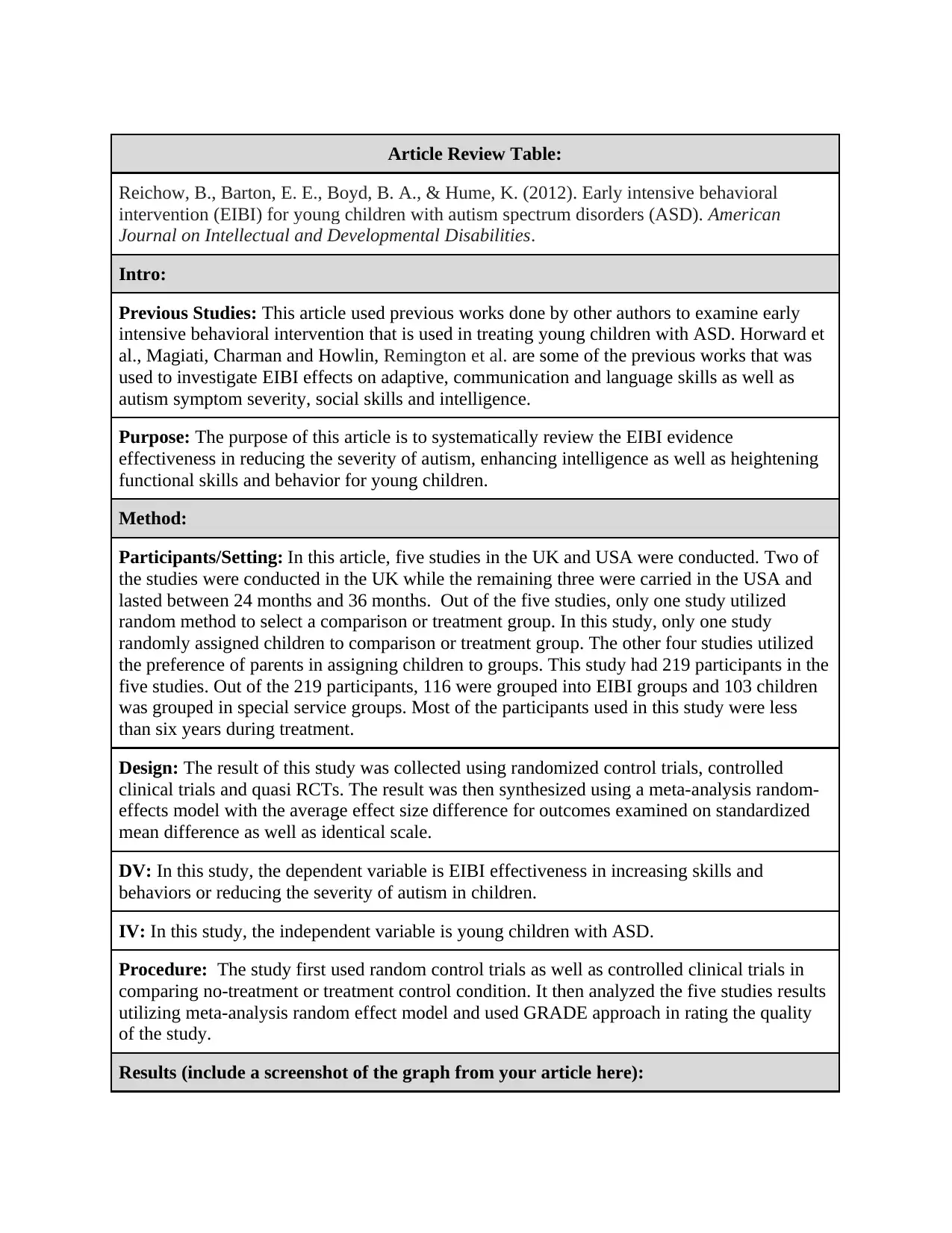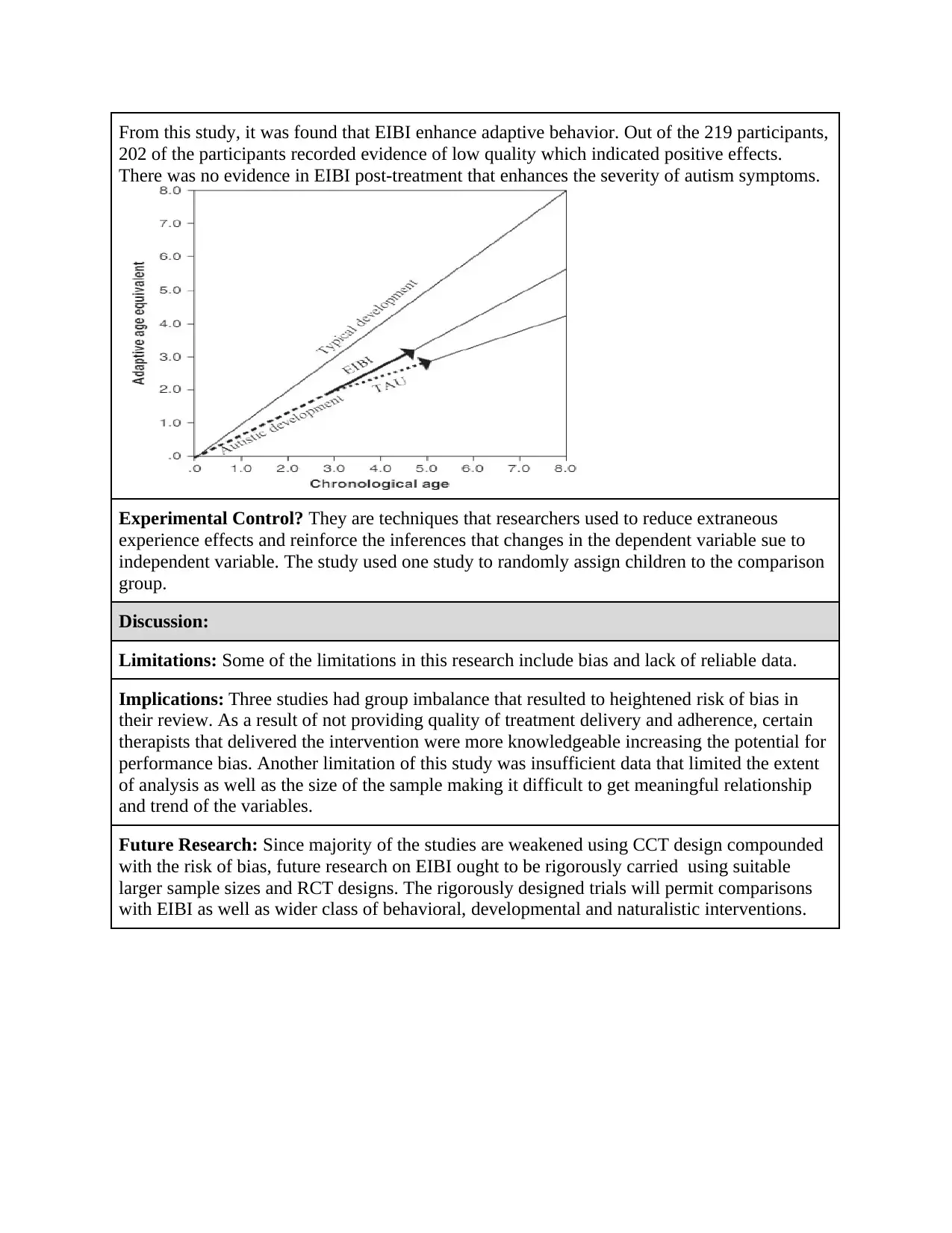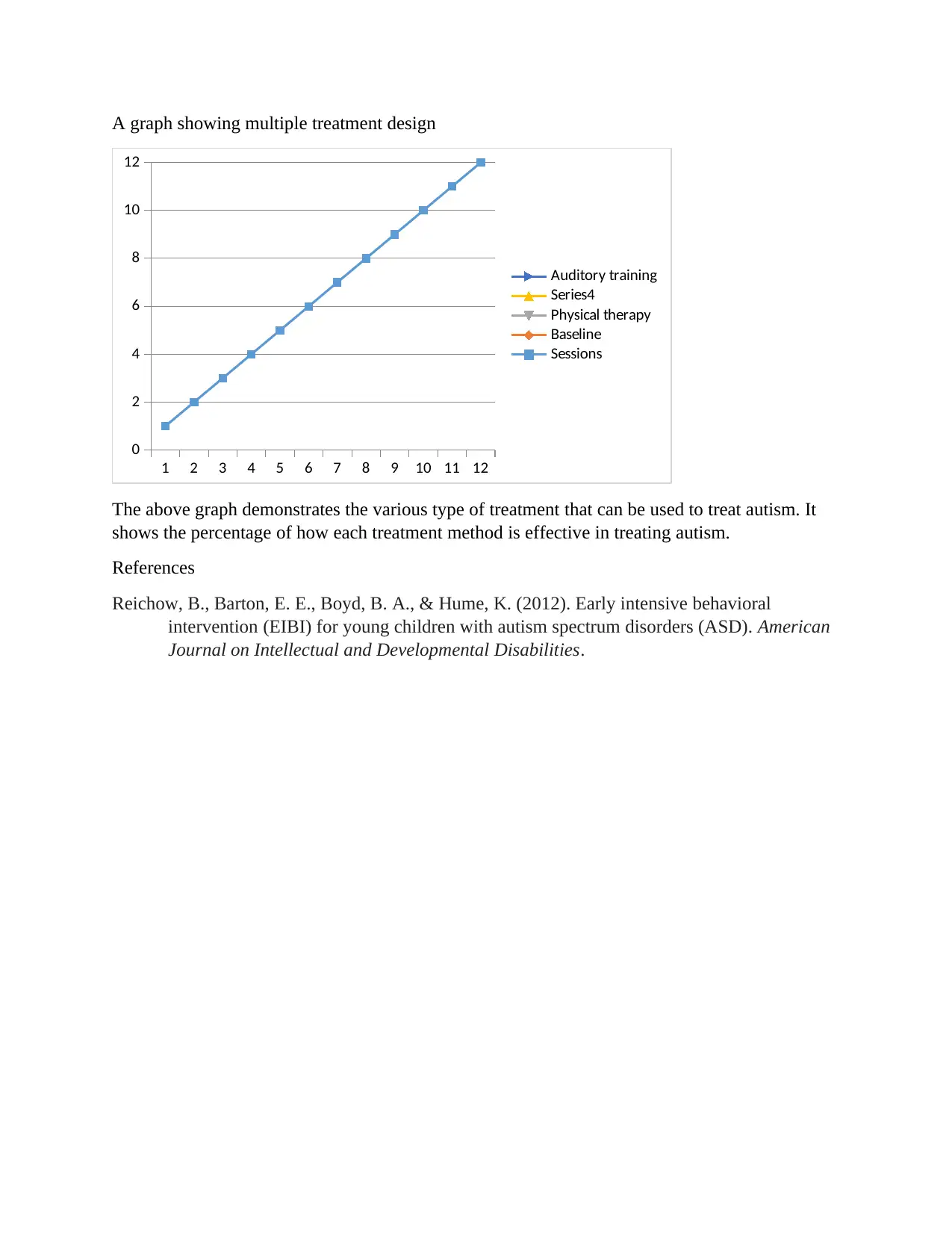ABA 534: Article Review on EIBI and Multiple Treatment Designs
VerifiedAdded on 2022/08/20
|4
|806
|13
Homework Assignment
AI Summary
This assignment is an article review focusing on an article about Early Intensive Behavioral Intervention (EIBI) for young children with Autism Spectrum Disorder (ASD). The review includes an introduction summarizing previous studies, the purpose of the research, and the methodology employed, including participant settings, experimental design, and the dependent and independent variables. The results section highlights the findings related to EIBI's effectiveness in enhancing adaptive behavior and the limitations of the study, such as bias and insufficient data. The discussion covers the implications of the research and suggests areas for future research, particularly the need for rigorously designed trials. The assignment also requires the inclusion of a graph from the article and the creation of a fabricated graph demonstrating a multiple treatment design, along with a brief description of the study type. The aim is to understand how multiple treatment designs are used in behavioral analysis to treat autism.
1 out of 4











![[object Object]](/_next/static/media/star-bottom.7253800d.svg)